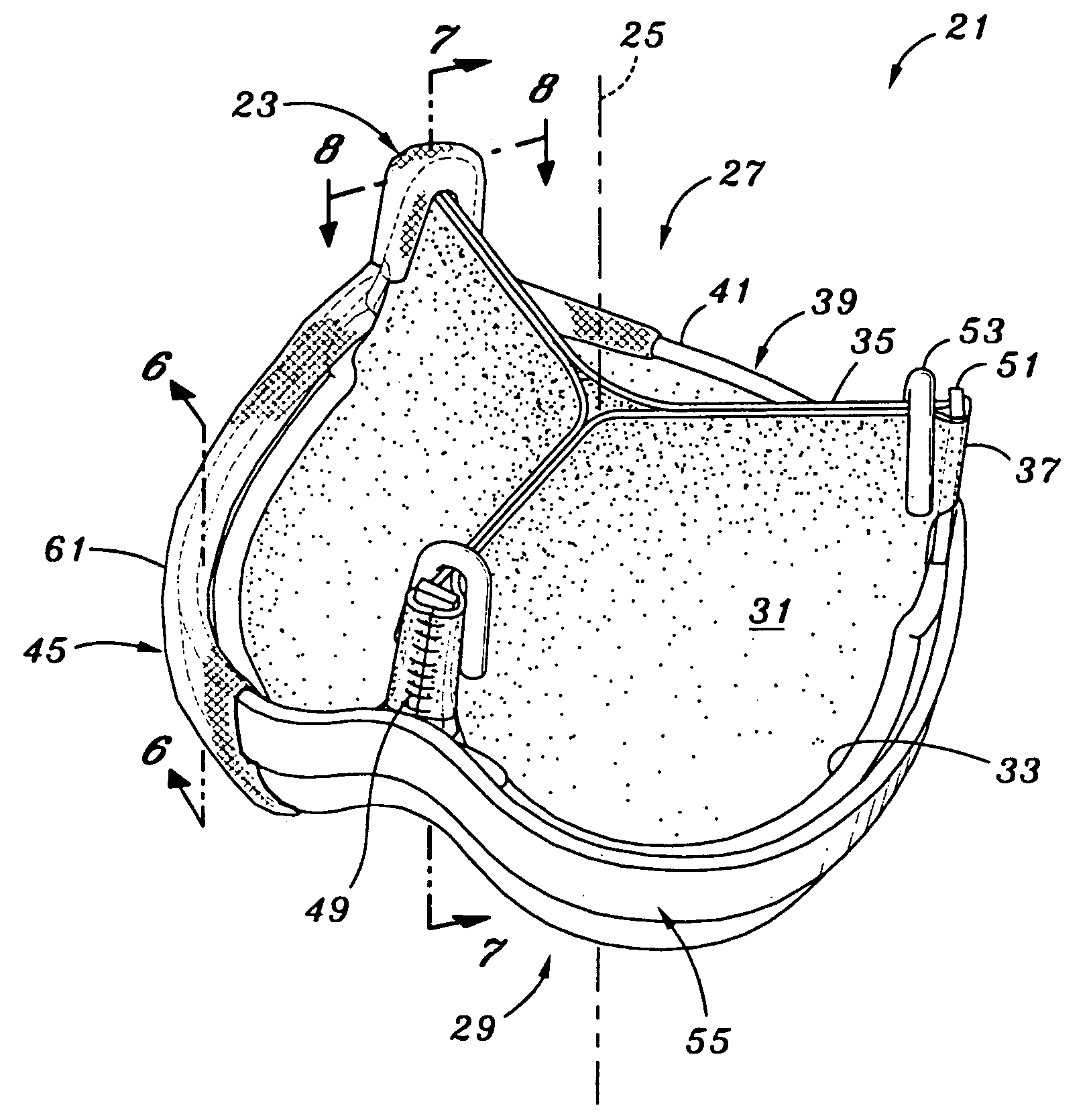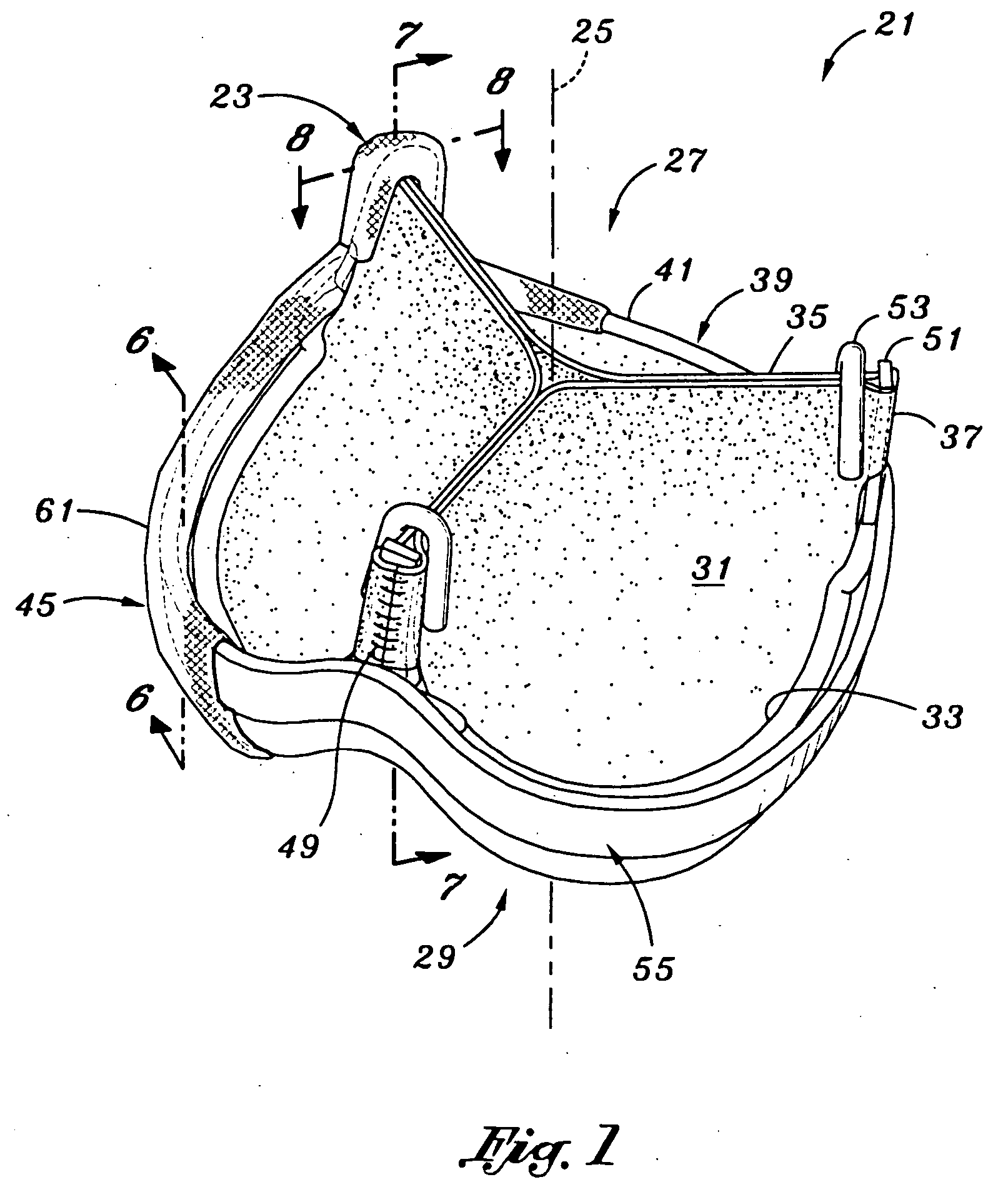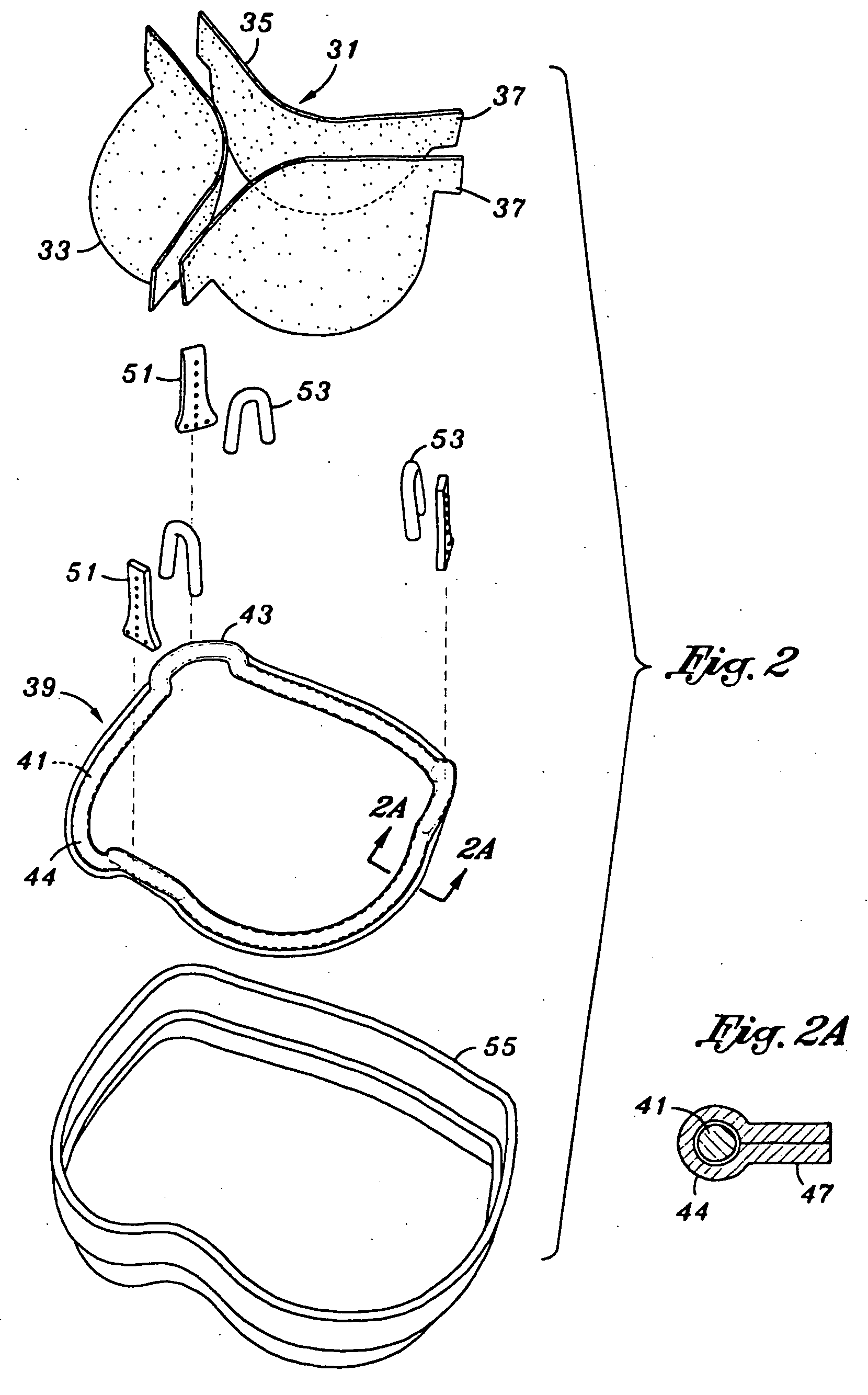Flexible heart valve
- Summary
- Abstract
- Description
- Claims
- Application Information
AI Technical Summary
Benefits of technology
Problems solved by technology
Method used
Image
Examples
Embodiment Construction
[0032] The following detailed description, and the figures to which it refers, are provided for the purpose of describing examples and specific embodiments of the invention only and are not intended to exhaustively describe all possible examples and embodiments of the invention. Identical elements and features are given the same reference number as appropriate for purposes of describing the various embodiments of the present invention.
[0033] Referring now to FIGS. 1 and 2, a replacement tissue type heart valve 21 of the present invention for implantation in an annulus of a heart is constructed about a valve axis 25 that defines an outflow end 27 and an inflow end 29. The valve includes commissures 23 directed to the outflow end and adapted to move in conformity with an anatomical wall structure adjacent the annulus of the heart. Although the valve 21 of the present invention is particularly suitable for implantation at the aortic valve position, it may also function adequately in o...
PUM
 Login to View More
Login to View More Abstract
Description
Claims
Application Information
 Login to View More
Login to View More - R&D
- Intellectual Property
- Life Sciences
- Materials
- Tech Scout
- Unparalleled Data Quality
- Higher Quality Content
- 60% Fewer Hallucinations
Browse by: Latest US Patents, China's latest patents, Technical Efficacy Thesaurus, Application Domain, Technology Topic, Popular Technical Reports.
© 2025 PatSnap. All rights reserved.Legal|Privacy policy|Modern Slavery Act Transparency Statement|Sitemap|About US| Contact US: help@patsnap.com



